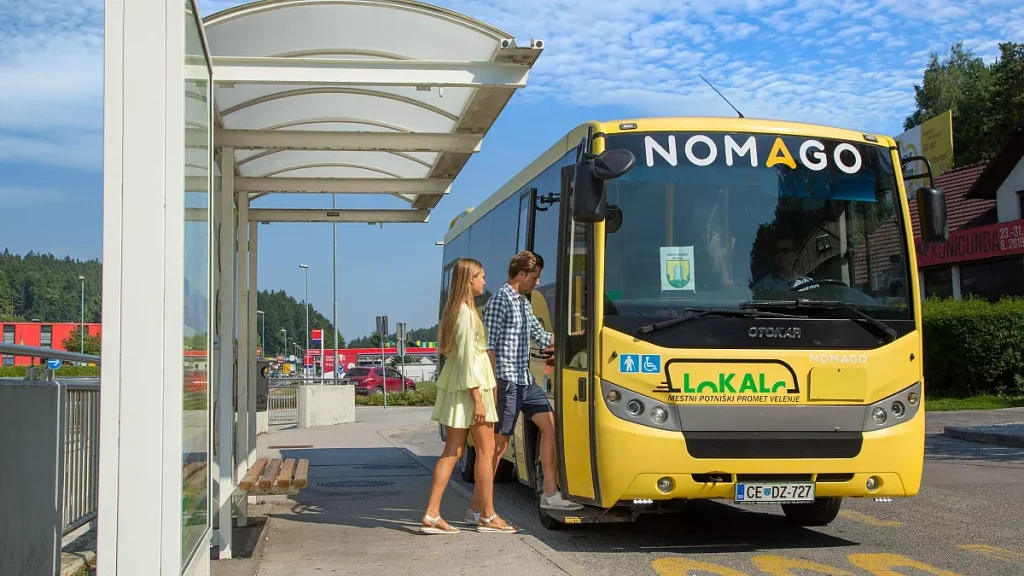How to Travel Sustainably Without Sacrificing Comfort

How to travel sustainably without sacrificing comfort is a question many modern travelers ask. As climate change and overtourism become global concerns, people want to reduce their impact—but not at the cost of a relaxing, enjoyable trip. This article explains how you can travel in an eco-friendly way while still enjoying comfort, convenience, and memorable experiences. You’ll find clear steps, real case studies, actionable tips, a comparison table, pros and cons, and answers to common questions.
Introduction: Why Sustainable Travel Matters
Travel is fun, but it can harm the planet—through carbon emissions, plastic waste, and damage to local cultures. Sustainable travel means exploring the world while protecting it for future generations. The good news: You don’t have to give up comfort or style to make a positive impact.

What Is Sustainable Travel?
Sustainable travel is about making choices that:
- Reduce your environmental footprint (less waste, less pollution)
- Respect local cultures and communities
- Support local economies
- Protect wildlife and natural resources
It’s not about giving up comfort—it’s about traveling smarter and more thoughtfully.
Key Features of Sustainable Yet Comfortable Travel
- Green accommodation: Hotels with energy-saving tech, waste reduction, and local sourcing.
- Low-impact activities: Walking tours, cycling, wildlife-friendly safaris.
- Reusable essentials: Water bottles, bags, and toiletries to cut single-use plastic.
- Local food and shopping: Eat and buy from local businesses, not global chains.
- Respect for culture: Learn local customs, support community projects, and avoid exploitation.
- Eco-friendly transport: Trains, buses, carpooling, or direct flights over multiple layovers.

How to Plan a Sustainable and Comfortable Trip
How to Travel Sustainably Without Sacrificing Comfort—Planning Steps
- Choose your destination wisely:
- Prefer places that manage tourism well and care for their environment.
- Avoid overcrowded “hot spots” during peak season.
- Book direct and local:
- Use local travel agents or book directly with hotels and guides.
- This supports the local economy and often gives you better service.
- Pack smart:
- Bring reusable water bottles, bags, and utensils.
- Choose lightweight, eco-friendly luggage and clothing.
- Offset your carbon footprint:
- Use reputable carbon offset programs to balance your travel emissions.
- Research green certifications:
- Look for hotels and tours with eco-labels (Green Key, EarthCheck, Rainforest Alliance).

Choosing Eco-Friendly Transportation
How to Travel Sustainably Without Sacrificing Comfort—Transport
- Trains and buses: Comfortable, scenic, and much lower emissions than planes.
- Direct flights: Fewer takeoffs and landings mean less pollution.
- Hybrid/electric cars: Rent or use ride-shares that are eco-friendly.
- Biking and walking: Great for short distances and exploring cities.
- Public transport: Modern buses and metros are clean, efficient, and often air-conditioned.

Sustainable Accommodation Without Sacrificing Comfort
How to Travel Sustainably Without Sacrificing Comfort—Where to Stay
- Eco-hotels: Use solar power, recycle water, and offer organic bedding.
- Boutique guesthouses: Often locally owned, with personal service and green practices.
- Green resorts: Luxury with sustainability—think private villas with solar pools and organic spas.
- Home rentals: Platforms like Airbnb let you filter for eco-friendly properties.
- Certifications: Look for LEED, Green Globe, or similar eco-labels.
Eating and Shopping Sustainably on the Road
How to Travel Sustainably Without Sacrificing Comfort—Food & Shopping
- Eat local: Choose restaurants serving local, seasonal food.
- Farmers’ markets: Fresh, organic, and supports local farmers.
- Avoid chains: Skip global fast food for unique, local flavors.
- Reusable containers: Bring your own cup or box for takeout.
- Ethical souvenirs: Buy crafts directly from artisans, not mass-produced trinkets.
Enjoying Activities with Low Environmental Impact
How to Travel Sustainably Without Sacrificing Comfort—Things to Do
- Nature walks and guided hikes: Enjoy the outdoors without harming it.
- Wildlife tours: Choose operators that protect animals and habitats.
- Cultural experiences: Cooking classes, dance lessons, or art workshops with locals.
- Water activities: Kayaking, paddleboarding, or snorkeling with eco-certified guides.
- Wellness travel: Yoga retreats and spas that use natural, local products.

Sustainable Travel vs. Traditional Travel Table
| Feature | Sustainable Travel | Traditional Travel |
|---|---|---|
| Transport | Trains, direct flights, biking | Multiple flights, car rentals |
| Accommodation | Eco-hotels, guesthouses, green resorts | Large hotels, all-inclusives |
| Food | Local, seasonal, organic | Chain restaurants, imported food |
| Activities | Low-impact, cultural, nature-based | Mass tourism, theme parks |
| Waste | Minimal, reusable, compostable | Single-use, disposable |
| Comfort | High—modern eco options | High—sometimes less eco-friendly |
The Business of Sustainable Travel: Trends and Innovations
How to Travel Sustainably Without Sacrificing Comfort—Industry Trends
Green Technology in Hospitality
- Smart energy systems: Hotels use sensors, solar panels, and energy-efficient lighting to cut waste without reducing guest comfort.
- Water-saving tech: Low-flow showers, rainwater harvesting, and greywater recycling are now standard in many eco-hotels.
- Digital check-in/out: Reduces paper waste and speeds up the process for travelers.
Airlines and Carbon Reduction
- Sustainable aviation fuel: Airlines are investing in biofuels to cut emissions.
- Carbon offset partnerships: Many airlines now offer easy, credible carbon offset options at booking.
- Lighter aircraft and efficient routes: New aircraft designs and direct flights save fuel and time.
Visual: Sustainable Travel Innovations Table
| Sector | Innovation Example | Comfort Benefit |
|---|---|---|
| Hotels | Smart thermostats, solar | Personalized climate control |
| Airlines | Direct flights, biofuels | Faster, quieter, greener |
| Car Rentals | Electric/hybrid fleets | Quiet, smooth rides |
| Tours | E-bike/scooter rentals | Fun, easy city exploration |
The Role of Certification and Greenwashing
How to Travel Sustainably Without Sacrificing Comfort—Certifications
- Trusted eco-labels: Look for Green Key, EarthCheck, Rainforest Alliance, and LEED. These require real sustainability actions, not just marketing.
- Beware of greenwashing: Some hotels or tours claim to be “eco” with little proof. Always check for third-party certification or ask about specific practices.
“A true eco-hotel will gladly explain its green policies. If they can’t, it’s a red flag.”
— Maria Silva, Sustainable Tourism Consultant
Sustainable Travel in South America: Regional Focus
How to Travel Sustainably Without Sacrificing Comfort—South America
Unique Opportunities
- Community-based tourism: Stay in local lodges in the Amazon, Andes, or Patagonia, supporting indigenous communities and enjoying authentic experiences.
- Eco-lodges in the Galápagos, Costa Rica, Brazil: Luxury and sustainability go hand in hand, with solar energy, organic food, and guided wildlife tours.
- Green transport: Buses and trains in Chile, Argentina, and Peru offer scenic, comfortable, and low-impact travel.

Visual: Top Sustainable Destinations Table
| Country | Eco-Friendly Experience | Comfort Highlight |
|---|---|---|
| Ecuador | Galápagos eco-lodges | Private wildlife tours |
| Brazil | Amazon rainforest community stays | Guided river cruises |
| Chile | Torres del Paine green hotels | Spa and gourmet dining |
| Argentina | Patagonian estancias with solar power | Cozy fireplaces, local wines |
| Peru | Sacred Valley eco-resorts | Wellness centers, yoga |
Sustainable Travel and Business Travelers
How to Travel Sustainably Without Sacrificing Comfort—For Professionals
- Green business hotels: Many chains now offer eco-certified rooms with all modern amenities.
- Remote work hubs: Coworking spaces in eco-lodges or green hotels provide fast Wi-Fi and quiet work zones.
- Sustainable conference venues: Choose venues with recycling, energy-saving, and local catering policies.
“Sustainable travel is now a key part of corporate responsibility. Employees want comfort and companies want to protect the planet.”
— Daniel Okoro, Corporate Travel Manager
The Psychology of Comfortable Sustainable Travel
How to Travel Sustainably Without Sacrificing Comfort—Mindset Shifts
- Quality over quantity: Fewer, longer stays reduce your footprint and let you enjoy destinations more deeply.
- Experience-focused: Seek out unique, meaningful activities instead of just ticking off tourist spots.
- Connection: Meeting locals and supporting their businesses enhances both comfort and impact.
Case Studies: Real Travelers, Real Comfort
Case Study 1: The Luxury Eco-Resort in Bali
A couple stayed at a five-star eco-resort with solar energy, organic cuisine, and private pools. They enjoyed luxury and left a small environmental footprint.
Case Study 2: The Family Train Adventure in Europe
A family traveled by train across France and Switzerland, enjoying spacious seats, scenic views, and zero airport stress.
Case Study 3: The Business Traveler in Lagos
A professional chose a local boutique hotel with energy-saving tech and local food, enjoying comfort and supporting the community.
Case Study 4: The Digital Nomad in Portugal
A remote worker rented a solar-powered Airbnb, biked to coworking spaces, and shopped at farmers’ markets—balancing sustainability and convenience.
Case Study 5: The Safari with a Purpose in Kenya
A group joined a wildlife-friendly safari, staying in eco-lodges and supporting conservation projects, with all the comforts of home.
Case Study 6: The Wellness Retreat in Costa Rica
A traveler attended a yoga retreat using only local, organic products and sustainable energy, enjoying relaxation and eco-luxury.
Case Study 7: The Student Backpacker in Vietnam
A student used public buses, stayed in green hostels, and ate street food—saving money, staying comfortable, and reducing waste.
Case Study 8: The Cruise with a Green Touch
A retiree chose a cruise line with advanced waste management and carbon offsets, enjoying all-inclusive comfort with less guilt.
Case Study 9: The South American Businesswoman
Lucia, from Buenos Aires, books only eco-certified hotels for work trips, enjoying rooftop gardens and organic breakfasts.
Case Study 10: The Lagos Family Reunion
A Nigerian family in Brazil chooses a solar-powered guesthouse for a reunion—enjoying comfort, privacy, and a low carbon footprint.
Case Study 11: The Adventure Couple in Patagonia
They hike with a guide who uses GPS and solar chargers, sleep in heated eco-domes, and eat local lamb—all with luxury-level comfort.
Case Study 12: The Student Group in Peru
A university group volunteers in a community tourism project, staying in a green hostel with hot showers and Wi-Fi.
Pros and Cons Table
| Pros of Sustainable Travel | Cons of Sustainable Travel |
|---|---|
| Reduces environmental impact | Sometimes costs more up front |
| Supports local communities | Limited options in remote areas |
| Often healthier and more authentic | May require more planning |
| Can be just as comfortable as luxury | Greenwashing risk—check credentials |
| Unique, memorable experiences | Some eco-hotels have fewer amenities |
Tips for Sustainable, Comfortable Travel
- Plan ahead: Research eco-friendly options before you go.
- Pack light: Less weight means lower emissions and easier travel.
- Bring reusables: Water bottle, bag, utensils, and coffee cup.
- Offset carbon: Use reputable programs for flights and big trips.
- Ask questions: Don’t be shy about a hotel’s or tour’s green practices.
- Respect local rules: Follow guidelines for wildlife, parks, and cultural sites.
- Support local: Spend your money where it helps the community.
- Stay longer in fewer places: Reduces travel emissions and deepens your experience.
- Educate others: Share your sustainable travel tips with friends and family.
- Enjoy the journey: Sustainable travel is about quality, not just ticking off sights.
- Use travel apps: Find green hotels, local restaurants, and public transport with apps like EcoHotels or HappyCow.
- Book direct: Avoid third-party sites when possible—direct bookings often mean more money for local businesses.
- Travel insurance: Choose providers that cover eco-friendly activities and emergencies.
- Stay flexible: Sometimes the most sustainable option is also the most comfortable—like a scenic train instead of a short flight.
Expert Quotes
“Travelers don’t have to choose between comfort and sustainability. With today’s options, you can have both—and often at a better value.”
— Sofia Ramirez, Eco-Travel Blogger
Looking Ahead: The Future of Sustainable Travel
- More green luxury: Expect more five-star eco-resorts and green business hotels.
- Tech-driven solutions: Smart rooms, AI-powered itineraries, and carbon tracking apps.
- Traveler demand: As more people ask for sustainable options, the industry will keep improving comfort and convenience.
Frequently Asked Questions (FAQ)
1. Is sustainable travel always more expensive?
Not always. Many eco-options are affordable, and you may save by using public transport or local food.
2. Can I travel sustainably and still be comfortable?
Yes! Modern eco-hotels, trains, and tours are designed for comfort as well as sustainability.
3. What’s the best way to reduce my travel carbon footprint?
Choose direct flights, use trains or buses, and offset your emissions.
4. Are eco-hotels less comfortable?
No. Many offer luxury amenities with an eco-friendly twist.
5. How do I know if a hotel is really sustainable?
Look for certifications (Green Key, LEED), read reviews, and ask about their practices.
6. Is eating local food really better for the planet?
Yes. It reduces transport emissions and supports local farmers.
7. What’s the easiest way to avoid plastic waste while traveling?
Bring your own reusable bottle, bag, and utensils.
8. Can I travel sustainably with kids?
Absolutely. Many eco-hotels and tours are family-friendly.
9. Do I have to give up air conditioning or hot showers?
No. Many green hotels use energy-efficient systems for comfort.
10. How can I make a difference as a traveler?
Choose green options, support local communities, and share your knowledge.
Conclusion
How to travel sustainably without sacrificing comfort is about making smart, thoughtful choices. You can enjoy luxury, convenience, and memorable experiences—while protecting the planet and supporting local people. With a little planning and the right mindset, sustainable travel can be just as comfortable, and often more rewarding, than traditional tourism.




